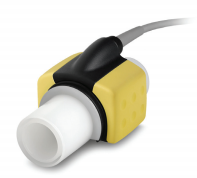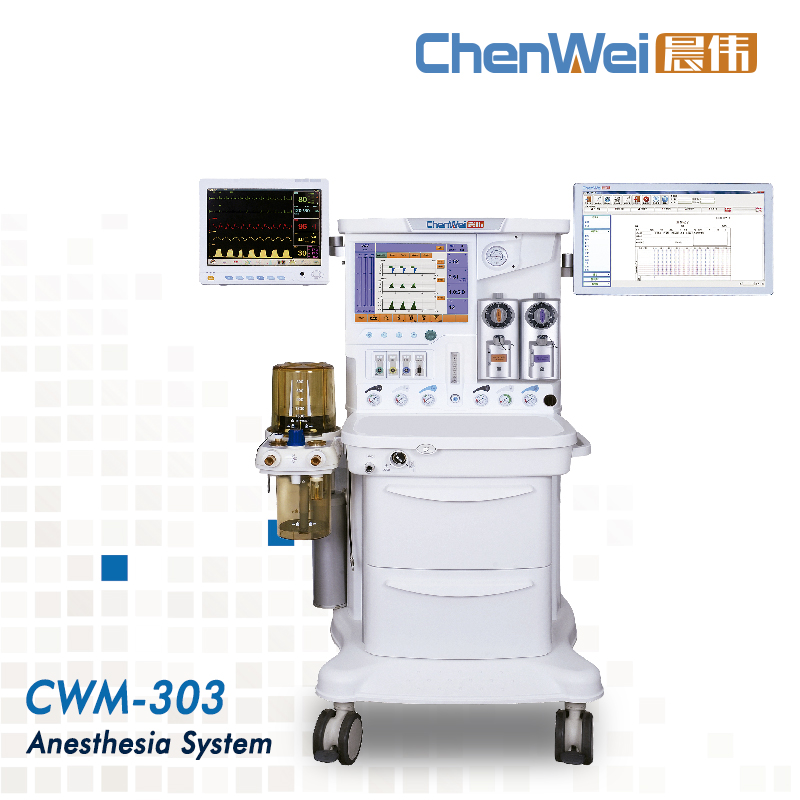
In general, knowledge of anesthetic gas and ventilation is an important part of the judgment and decision-making process. CHENWEI CWM-303's Anesthesia gas module can help you quickly learn about anesthesia and make clinical decisions. The module provides anesthesia gas measurements and gas measurement parameters without complex setup operations.
The concentration of Anesthetic gas in respiratory gas is closely related to the depth of anesthesia and the disturbance of physiological function. Detection of anesthetic gas concentration is of great significance for guiding the implementation of anesthesia and improving the safety of anesthesia.
The anesthetic gas module is connected to the anesthetic machine to monitor breathing gases CO₂, N₂O, and anesthetic gases (halothane, enflurane, isoflurane, sevoflurane, and desflurane). The probe is connected to the patient's respiratory circuit to monitor inhaled/exhaled air during anesthesia, recovery, and respiratory care.
The monitoring functions that can be implemented on CHENWEI CWM-303 include: 5AA (monitoring of five anesthetic gases, halothane, enflurane, isoflurane, sevoflurane and desflurane, which can automatically identify the gas used), N₂O monitoring, CO₂ monitoring (which can be divided into FICO₂ inhaled CO₂ and ETCO₂ end-expirated CO₂), and MAC monitoring (minimum alveolar concentration).


FICO₂ & ETCO₂ monitoring:
1. FICO₂ is the absorption of CO₂ value, this value indicates the consumption of sodium lime.
2. ETCO₂ monitoring, also known as exhaled carbon dioxide monitoring, is a non-invasive method for continuous monitoring the trend of CO₂ as it is eliminated from the lungs. It has variable effect for apply ETCO₂.
2.1 ETCO₂ was used as the gold standard for confirming the correct location of the endotracheal tube.
2.2 Capnography is an effective method to diagnose early respiratory depression and airway disorders, especially during sedation, leading to a reduction in serious complications.
2.3 Capnography is dynamic monitoring of patients with acute respiratory distress conditions such as asthma, chronic obstructive pulmonary disease (COPD), bronchiolitis, and heart failure.
MAC monitoring:
1. Minimum alveolar concentration (MAC) defines the anesthetic depth for inhaled agents at which 50% of patients respond to painful stimulus with movement; this measure allows comparison of the effects of inhaled anesthetics at equipment doses.
2. Monitored anesthesia care is the first choice in 10 to 30% of all surgical proceduresTrusted Source. It’s typically used for quick surgical procedures.
3. MAC is called monitored anesthesia care because a patient’s vitals are constantly monitored to assess pain control and vital functions. Surgical procedures that use MAC include: endoscopy, dental procedures, bronchoscopy, eye surgery, otolaryngologic surgery, cardiovascular surgery
neurosurgery, pain management procedures.
IRMA mainstream modules and accessories:
1. CO₂, N₂O, O₂ and five anesthetic gases, multiple configurations are available
2. No need to insert circuit board in the host, low power consumption, "plug and measure"
3. Suitable for adults, children, infants all kinds of airway adapter.
Key advantages:
1. Extremely lightweight (min. 25g)
2. Suitable for portable applications: it can be connected to a PDA or laptop
3. The world's only mainstream anesthesia gas detection and automatic identification
4. No maintenance, no correction
5. Cost savings (transportation cost, storage cost, reduced downtime, etc.)
6. Intelligent consumables
7. Easy integration
